Your message has been sent.
We’ll process your request and contact you back as soon as possible.
The form has been successfully submitted.
Please find further information in your mailbox.



Have you ever struggled with software projects that constantly run over budget, miss deadlines, or fail to meet user expectations? Maybe your team struggled to define those requirements in the first place, or responsibilities felt scattered, communication lagged, and progress stalled. You’re not alone — these challenges are incredibly common, but there’s a proven way to tackle them head-on.
That’s exactly what the SDLC (software development lifecycle) is built to solve. It offers a structured, repeatable approach to planning, building, and delivering software that actually works.
In this article, I’ll break down what SDLC really means today, how it helps you clarify your process from day one, and how it can help you consistently deliver software faster and with far fewer surprises.
The Software Development Life Cycle (SDLC) is a structured path for your software projects, that breaks down complex processes into manageable steps — from the initial concept right through to deployment and ongoing support. Each phase spells out specific tasks, assigns clear roles, and sets tangible deliverables, so that everyone involved stays on the same page and knows their job.
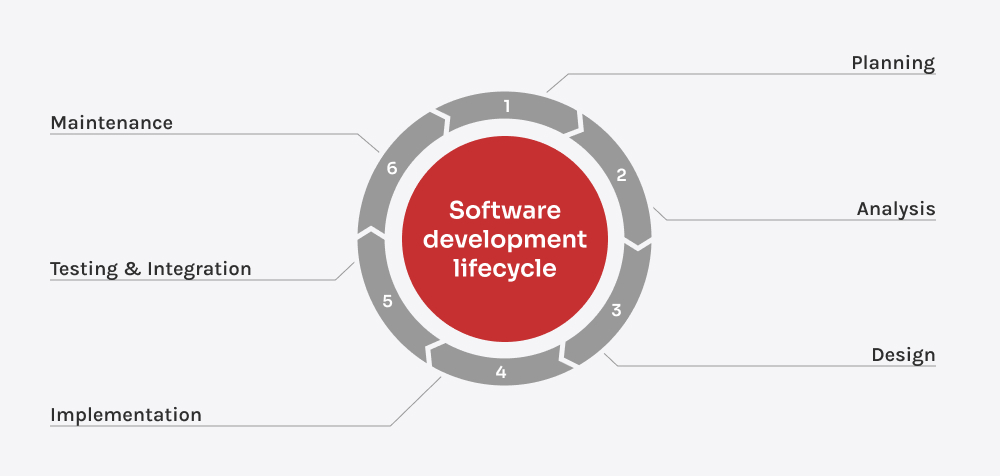
Software doesn’t come to life in a straight line. It evolves through a series of intentional SDLC phases. The SDLC guides that journey, helping teams stay aligned, reduce risk, and shape products that actually meet user and business needs.
This is the “why are we doing this” phase. It’s where teams define the project’s purpose, scope, objectives, budget, and delivery timelines. Business analysts and project managers work closely with stakeholders to identify pain points and outline a high-level strategy. What’s done here: stakeholder interviews, feasibility studies, risk assessments, and resource planning.
Once the project is approved, the team moves into defining what the software should actually do. The first step is gathering input from all stakeholders to understand both business needs and user expectations. This leads to the documentation of functional requirements (what users should be able to do) and technical requirements (how the system should behave under the hood). As the final step, the team reviews and refines the requirements before moving forward.
In the design phase, the team turns raw requirements into a practical blueprint for building the software. It starts with high-level design—mapping out the system’s architecture, major modules, data flow, and how different parts will interact. From there, they drill down into low-level design, detailing each component’s logic, structure, and behavior, including database layouts and key algorithms. Designers often create wireframes or clickable prototypes to explore the user journey and catch usability issues early. This stage removes guesswork for developers and helps avoid costly rework by surfacing technical challenges before any code is written.
In the development phase, the software begins to take shape as developers translate designs into working code. They build the application piece by piece, often in short, focused cycles that allow for frequent testing, feedback, and adjustment. Developers don’t just write code — they make deliberate architectural choices and structure features for long-term maintainability. Throughout the process, developers stay in close sync, reviewing each other’s work, refining logic, and solving problems collaboratively to keep the product aligned with both the technical vision and business goals.
No matter how polished the codebase, untested software is a ticking time bomb. The testing phase is where the product is prodded before reaching users. It typically begins with system testing — verifying whether the whole application works as a unit. Then comes manual testing, where QA engineers simulate real-world usage and edge cases. Finally, automated testing steps in to cover repetitive tasks at scale, ensuring stability after every new deployment.
Deployment is where the software leaves the lab and enters the real world. The team rolls out the product to users — whether in one big launch or gradually through staged releases — while closely monitoring its behavior in the live environment. This phase involves configuring infrastructure, setting up automated deployment pipelines, and preparing rollback strategies in case something goes sideways. Developers, DevOps engineers, and QA often work side-by-side to smooth the release process, patch last-minute issues, and make sure everything runs exactly as intended from day one.
Once the software is live, the real test begins. The team monitors performance, responds to user feedback, and tackles bugs or vulnerabilities that emerge under real-world conditions. Just as importantly, support teams work as the front line, gathering insights from users, while developers handle technical tweaks and long-term improvements. The software becomes a living product — constantly refined to stay relevant and reliable.
How you build software matters just as much as what you’re developing. SDLC models give structure to the chaos — helping teams navigate shifting goals, tight deadlines, and the constant tug-of-war between quality and speed.
The Waterfall model is a linear and sequential approach. It consists of distinct phases: Requirements, Design, Implementation, Testing, Deployment, and Maintenance. Each phase must be completed before moving to the next. There’s no going back once a phase is finished. This model works well when requirements are well-defined and unlikely to change.
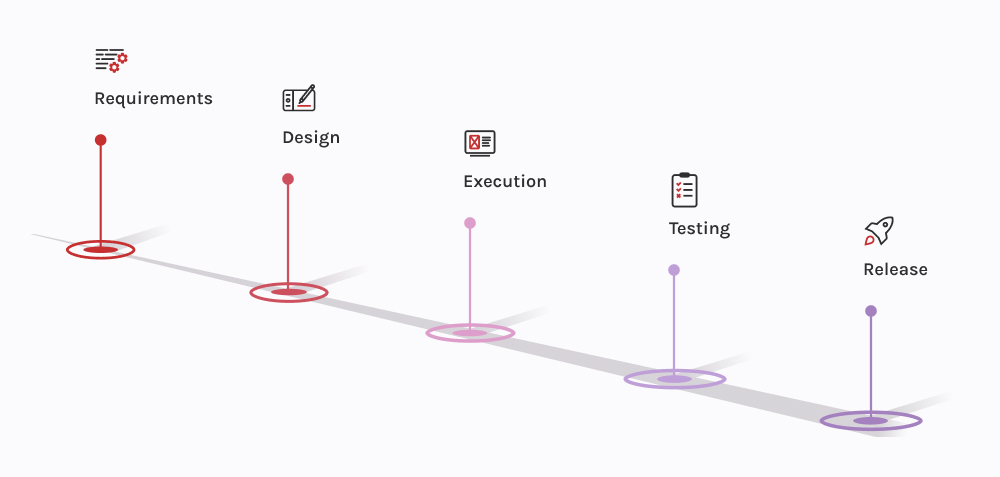
The Agile model divides the project into small, manageable parts called sprints that usually last 2-4 weeks. During each sprint, teams develop, test, and gather feedback to make improvements. Agile emphasizes customer collaboration and flexibility, allowing changes even late in development. Popular Agile frameworks include Scrum and Kanban. It’s ideal for projects where requirements change frequently, like software with regular updates.
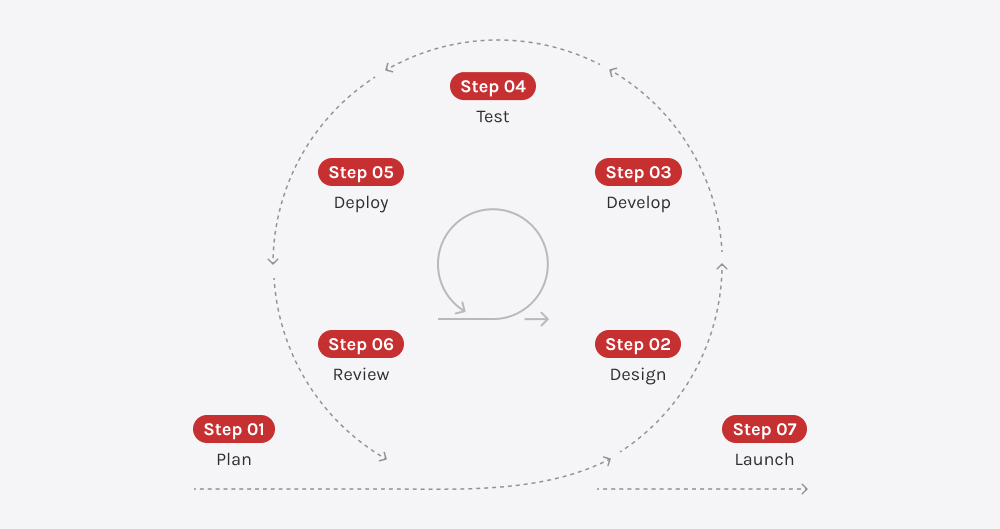
The Iterative model lets you build software step by step. You start with a simple version of the product, then keep improving it through multiple rounds. With each iteration, the team plans, designs, codes, and tests new features or refinements. It’s a solid choice when the project scope isn’t fully nailed down at the beginning because you can adapt and improve as you go.

The Spiral model combines iterative development with systematic risk assessment. It consists of four main phases: Planning, Risk Analysis, Engineering, and Evaluation. Each loop in the spiral addresses one set of requirements, with risk assessment at every stage. The model repeats the process, gradually adding more features. It’s used for large, complex, or high-risk projects, like aerospace or critical software systems.
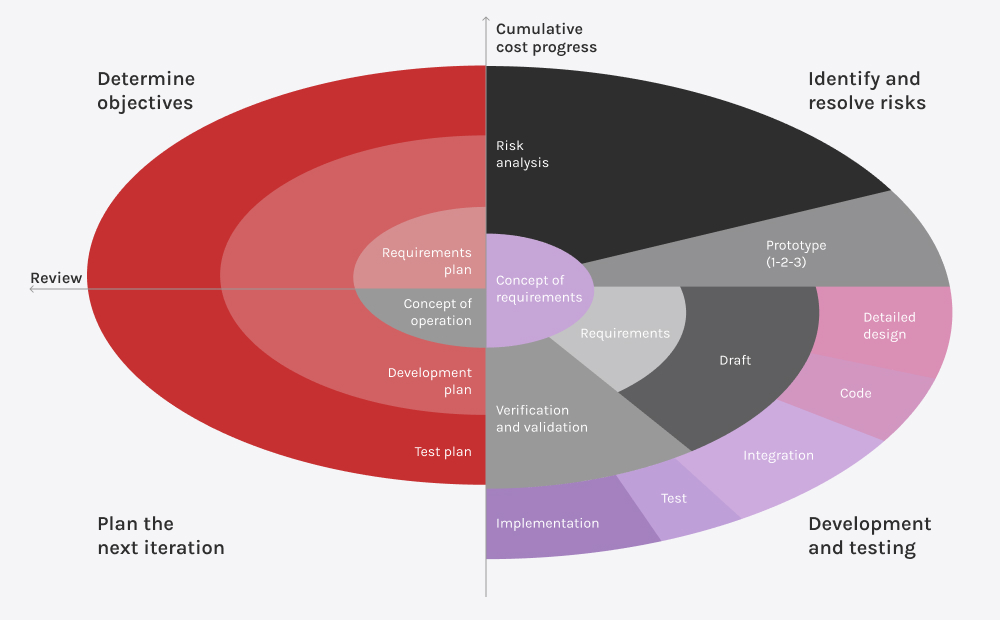
This model is similar to Waterfall but integrates extensive testing at each stage. After completing a development phase, a corresponding testing phase follows. This makes it more reliable for projects where accuracy and validation are crucial.
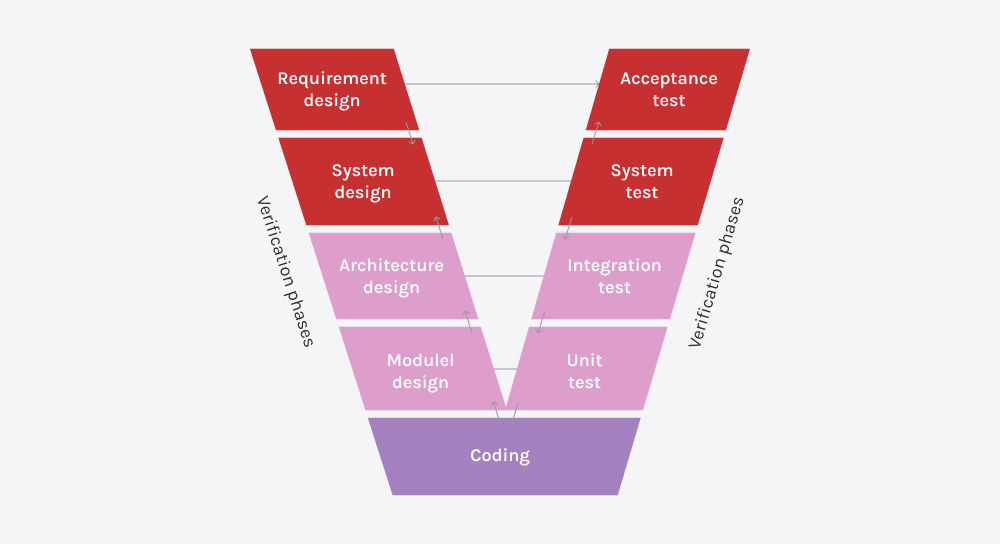
The Big Bang model involves starting development without much planning. Developers create the software based on limited requirements, often aiming for a quick prototype. This model is high-risk and can result in unpredictable outcomes, but it’s suitable for small projects with simple requirements or experimental software.
The DevOps model is an approach that combines software development (Dev) and IT operations (Ops) to improve collaboration, speed, and efficiency. It focuses on automating repetitive tasks like testing, integration, deployment, and monitoring.

Choosing the right SDLC model can set the tone for your entire project. It’s not a one-size-fits-all deal — the best fit depends on things like project size, complexity, budget, deadlines, how experienced your team is, and how involved your stakeholders want to be.
Let’s look at how you can pair different SDLC methodologies with typical project characteristics:
| Factor | Recommended SDLC models |
| Clear requirements | Waterfall, V-Model |
| Changing requirements | Agile, Iterative |
| Small projects | Waterfall |
| Large or complex projects | Agile, Spiral, DevOps |
| Frequent client interaction | Agile, Scrum |
| Minimal client interaction | Waterfall, V-Model |
| Fixed budget & timeline | Waterfall, V-Model |
| Flexible budget & timeline | Agile, Spiral |
| Quick releases needed | Agile |
| Longer development timeline | Waterfall, V-Model |
| Continuous maintenance | Agile, DevOps |
Going with a Software Development Life Cycle (SDLC) approach can really change how smoothly your software projects go. Here’s how SDLC helps make the whole process way more manageable and effective:
At Innowise, we’ve seen firsthand how the software development lifecycle (SDLC) approach makes life easier for our teams and our clients. By following SDLC best practices, we stay on the same page with everyone involved, clearly defining goals and expectations from the very beginning. This means fewer surprises, smoother processes, and predictable results in every stage, from planning and development to testing and deployment.
Thinking of upgrading your own approach? Check out our services page and see how we can help you bring clarity and efficiency to your next software project.
Dmitry leads the tech strategy behind custom solutions that actually work for clients — now and as they grow. He bridges big-picture vision with hands-on execution, making sure every build is smart, scalable, and aligned with the business.
Rate this article:
4.8/5 (45 reviews)







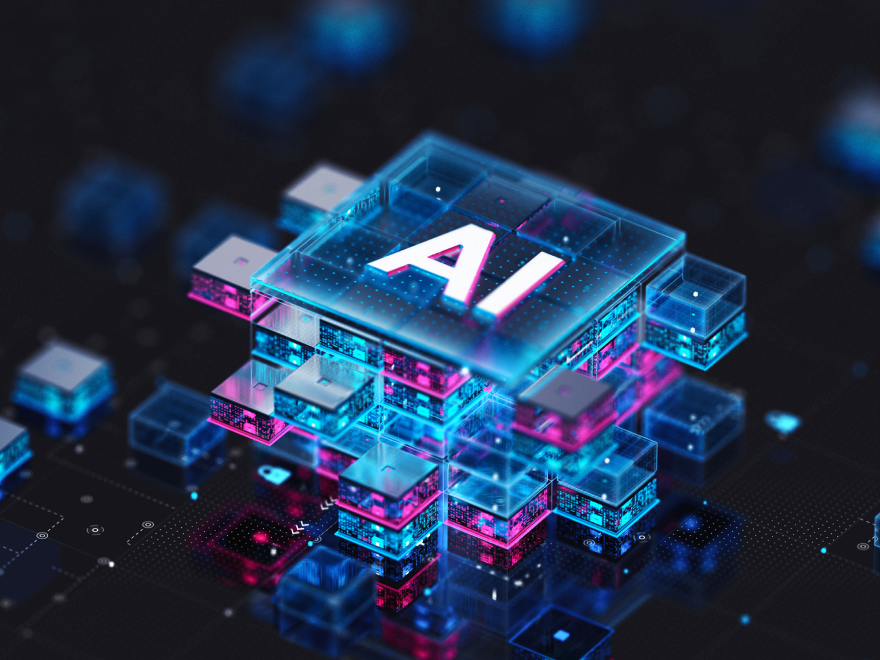




Your message has been sent.
We’ll process your request and contact you back as soon as possible.

By signing up you agree to our Privacy Policy, including the use of cookies and transfer of your personal information.